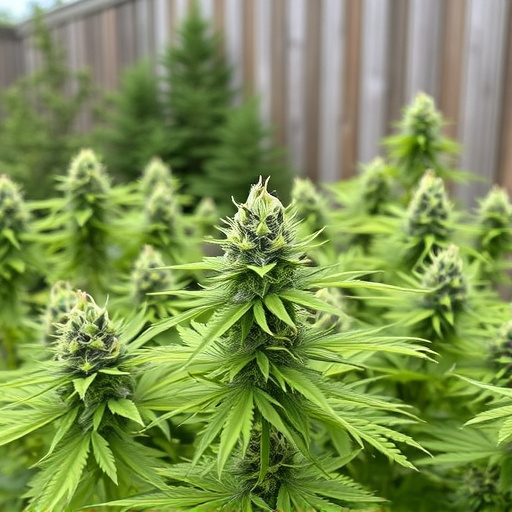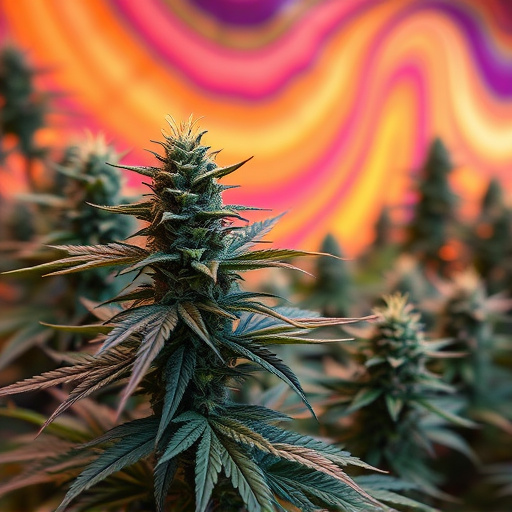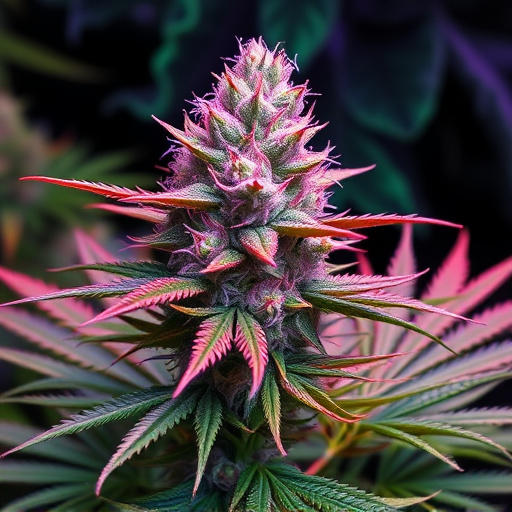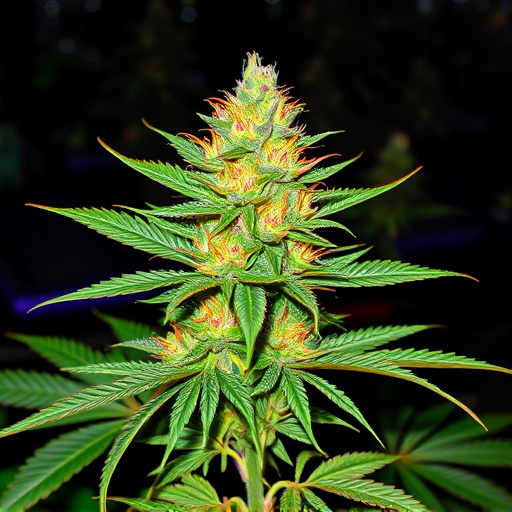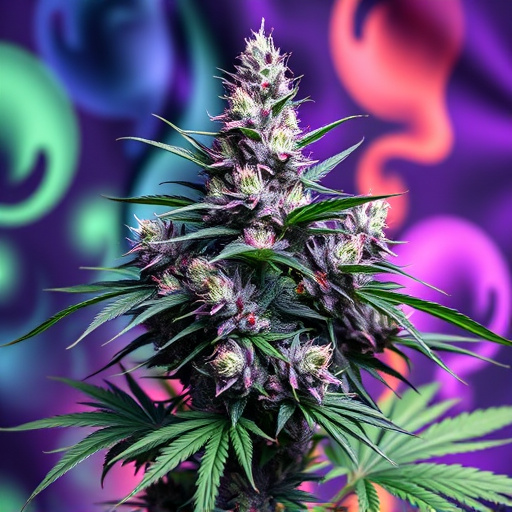The detection of psychedelic cannabis strains presents unique challenges due to their potent metabolites and complex chemical profiles. Traditional methods focusing on THC alone are inadequate, as advanced techniques like GC-MS reveal a web of compounds that extend detection times. This allows researchers to study post-consumption effects and legal implications more accurately. Cannabinoids and terpenes significantly impact strain characteristics and detection, with varying durations and intensities of psychoactive effects. Testing methods range from urine (24-72 hours) to hair folicle analysis (up to 90 days), each with its advantages and limitations for different scenarios, including recent use or chronic exposure to psychedelic cannabis strains.
“Unraveling the intricate factors that dictate cannabis detection times is essential, especially with the growing prevalence and evolving landscape of cannabis consumption. This article delves into the science behind identifying cannabinoids and terpenes as key players in detection methods. We explore the variations in individual metabolism, influenced by genetics, age, weight, health, and gender, which significantly impact testing outcomes. Furthermore, we analyze how psychoactive cannabis strains, characterized by varying THC and CBD levels, contribute to extended or reduced detection periods, shedding light on the challenges and advancements in detecting rare, potent, and psychedelic cannabis variants.”
- Metabolites and Detection Methods
- – The role of cannabinoids and terpenes in detection
- – Common detection techniques: Urine, blood, hair, and saliva tests
Metabolites and Detection Methods
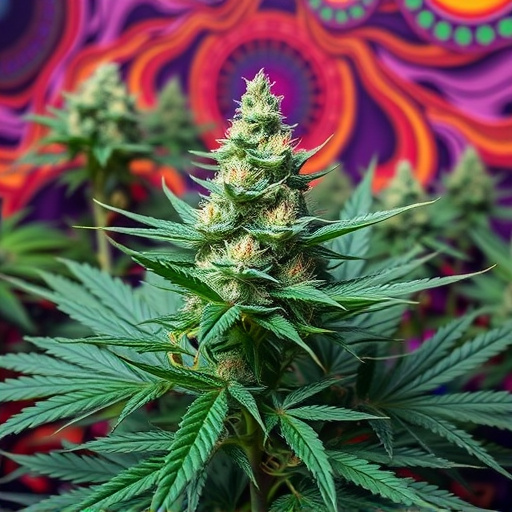
The detection of cannabis and its metabolites in the body is a complex process, especially with the rise of potent psychedelic cannabis strains. Traditional methods often focus on detecting the primary compound, THC (tetrahydrocannabinol), but modern analysis reveals a more intricate picture. Cannabis metabolites, byproducts formed during the breakdown of cannabinoids in the body, play a significant role in extending detection times. These metabolites can remain detectable for extended periods, sometimes even longer than the initial use of cannabis, making them crucial factors in understanding post-consumption effects and potential legal implications.
Advanced detection methods now employ techniques like gas chromatography-mass spectrometry (GC-MS) to identify these metabolites accurately. This technology allows for a more comprehensive analysis, revealing the presence of various compounds, including those from lesser-known psychedelic cannabis strains. By examining these metabolite profiles, researchers gain valuable insights into the duration and intensity of cannabis effects, offering a deeper understanding of its impact on the body and mind.
– The role of cannabinoids and terpenes in detection

Cannabinoids and terpenes play a pivotal role in the detection times of cannabis, particularly in psychedelic cannabis strains known for their potent effects. Cannabinoids like THC (tetrahydrocannabinol) and CBD (cannabidiol), along with various terpenes such as myrcene, limonene, and pinene, contribute significantly to the unique characteristics of different cannabis varieties. These chemical compounds not only influence the plant’s aroma, flavor, and overall sensory experience but also play a crucial part in how quickly and strongly its effects are felt by the consumer.
In psychedelic cannabis strains, higher concentrations of THC can lead to faster detection times, as it binds to cannabinoid receptors in the brain, inducing psychoactive effects. Terpenes, on the other hand, can either enhance or mitigate these effects. For instance, myrcene is known for its sedative properties and may prolong the duration of intoxication, while limonene is believed to have uplifting and energizing effects, potentially reducing detection time by enhancing cognitive functions. Understanding the intricate interplay between cannabinoids and terpenes offers valuable insights into why and how different cannabis strains affect individuals in diverse ways.
– Common detection techniques: Urine, blood, hair, and saliva tests
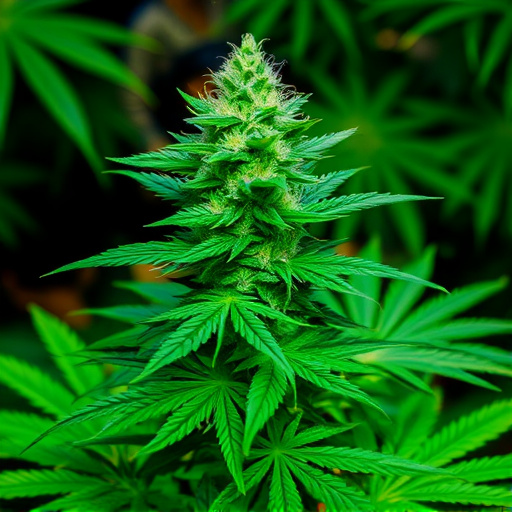
In the quest to determine cannabis detection times, various techniques are employed, each with its own strengths and limitations. Common methods include urine, blood, hair, and saliva tests. Of these, urine tests are often used as a quick screening tool due to their convenience and cost-effectiveness. However, they have a relatively shorter detection window, typically ranging from 24 to 72 hours after consumption, making them less reliable for detecting recent use of psychedelic cannabis strains.
Blood tests, while more accurate than urine tests, are generally used in more specialized settings like medical or legal contexts. They can detect cannabis use for up to 7-14 days, providing a more comprehensive picture of long-term use. Hair folicle analysis is another method that offers the longest detection window, often picking up on cannabis metabolism byproducts for up to 90 days after consumption, which makes it valuable for investigating chronic use or suspected prolonged exposure to psychedelic cannabis strains. Saliva tests, increasingly popular due to their non-invasive nature, offer a more moderate detection range of roughly 24-72 hours, making them suitable for immediate post-use assessments.
Understanding the factors influencing cannabis detection times is crucial for both users and legal authorities. The presence of cannabinoids and terpenes in various bodily fluids plays a significant role in determining detection windows, with urine tests offering the shortest window, typically up to 3 days post-consumption, while hair follicle tests can detect use for months due to the long-term storage of metabolites. When it comes to psychedelic cannabis strains, knowledge of these detection methods and variations is essential for users to make informed decisions regarding usage and potential legal implications.
